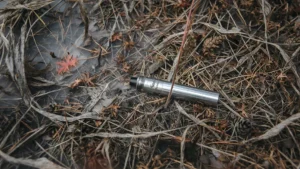During the spring lockdown people noticed how slowly nature in cities returned—Venetians sighted dolphins from their balconies and Barcelonians huge swarms of butterflies.

wildflowers Rewilding Barcelona’s streets
So post-lockdown Barcelona decided it would not return to normal. As the city came to a halt wilderness had taken back the streets and parks. The lack of gardening ensured that open spaces turned wild and were given back to their rightful owners: plants grew, insects danced and birds rejoiced but none more than butterflies that increased by 78% compared to the previous year.
“The lockdown gave us a glimpse of nature in the city and we liked it.”—Francisco Bergua president of the Spanish Association of Parks and Public Gardens (AEPJP),
Locals and city officials agreed that a return to normal was inconceivable, instead a more natural environment that embraces the city’s flora and fauna would mark the city’s post-covid comeback.
During lockdown deforestation in the Amazon rose by 0
What the city is doing:
First off the city is creating 783,300 sq m of green open space including 49,000 sq meters of greened streets. Then it is encouraging bird and insect life by implementing 200 nesting towers for birds and bats, 40 beehives and 80 plantings designed as insect “hotels”. Moreover, the council aims to educate the populace with an atlas listing of the city’s wildlife and plant species.
“It’s not just having a park surrounded by asphalt but introducing nature into the city. People need re-educating. Their idea of a clean space is somewhere where there’s no life, where the ecosystem is dead. There’s this idea that nature is something outside and that what’s natural for the city is for there to be nothing.”—Lorena Escuer, Hydrobiology
For officials it is important that residents realize that Rewilding isn’t simply a way for the city to cut gardening costs but rather a thought out plan to naturalise the environment—making it healthier for us all.
“Naturalising the city isn’t the same as making it a wild space, but instead of parks and gardens we need to think in terms of green infrastructure. Doing the same thing in a different way.”—Francisco Bergua
What locals are doing:

Sergio Carratalá roof garden: Els Terrats d’en Xifre
Architect Sergio Carratalá, founder of MataAlta Studio, has created roof gardens on 6 buildings with 10,000 native perennials that are both pollinator friendly and drought resistant—providing flowers and nesting places for birds.To irrigate the garden rainwater is collected and pumped via solar power. Once completed, the project will also provide each building with a wonderful slice of nature for its occupants.
Why more cities should follow:
This novel approach to city “gardening” showcases Barcelona’s commitment to conserving its biodiversity. The scheme would also save water, energy, and money—becoming both a smarter and more sustainable system.We’ve all felt how spending more time in nature has the power to heal, even just “earthing” can improve our mental states. So wouldn’t it be great if more cities took the initiative to rewild?
Source: The Guardian: Bat boxes’, greened streets and bug hotels.













